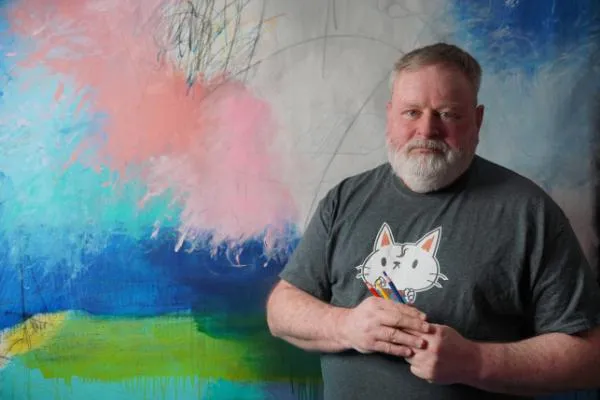
A Practice of Attention
As a teenager growing up in a Miami suburb, I dreamed of being an academic. I imagined myself one day as chair of a prestigious music department, traveling the world, giving lectures, and hearing my works performed in celebrated venues. For nearly four decades, I pursued that path: writing articles and essays, publishing a book with Oxford University Press, presenting at conferences, and finishing a dissertation on Beethoven’s Third Sonata for Violoncello and Piano. These were real achievements, but they were driven more by a hope for recognition than by creative necessity.
In truth, the ladder I thought I was climbing was crumbling beneath me. My works were often performed once and then forgotten. Even my dissertation piece was “stillborn.” I spent more energy trying to prove myself than making art I loved. A small chapter in Steven Pressfield’s The War of Art changed everything. He asks, “Who are you making art for?” My honest answer shook me. I realised I had been composing for the wrong reasons: to please teachers, to impress colleagues, to gain validation.
What I came to believe, and what I still tell younger artists, is this: do not try and please your teachers, your public, or to impress your friends and neighbours. Do not make art to show you are a genius, a misunderstood giant, or to get laid. Make art that you love, want to live with, and have peace with the work. And if you are lucky, and I mean lucky, others will eventually find you and respond. But be warned, their response is not a validation of who you are. And for that, yes, be a good person.

My move to Tallinn, Estonia, made this conviction real. I first came in 2008 to give a keynote at Tallinn University, and I kept returning, staying longer each time. In 2015, a Fulbright year changed me entirely. I began painting, taking photographs, writing texts, and experimenting with installation. One winter’s day, sitting outside in the blinding sun and bitter cold, I thought: I need to change my life. Three years later, I moved permanently.
In Tallinn, I did something I had never dared before. I wrote a two-and-a-half-hour work that focused on a single, evolving sonority. I collaborated with Portuguese sculptor Carla Castiajo on sound installations for her doctoral research, which opened my practice outward. The silence, the slower rhythms of life, and the independence I felt in Estonia allowed me to hear differently, to trust quiet, to value duration, and to rediscover creative joy.
Today, I identify as an interdisciplinary artist working fluidly with sound, paint, text, and video. My training as a composer still grounds me, and my work continues to move between two worlds: the concert hall and the realm of lowercase ambient music, those slowly unfolding soundscapes that hover on the edge of audibility. Increasingly, I see these not as separate domains but as parts of a single continuum.

My visual practice follows the same thread of attention. Photography became a way of noticing shadows, glitches, and marks that hover between the visible and invisible. Painting gave me another medium for resonance, layers of colour and texture as temporal gestures. In video, sound and image merge, allowing digital dust and sonic debris to coexist. Each medium asks the same question: what happens when you slow down and listen, or look, with care?
For a long time, I felt like an octopus, with many arms reaching in different and disconnected directions. I worried that I had no clear identity: composer, painter, photographer, video artist, writer. Then I realised the octopus has no problem recognizing its eight arms as part of itself. Everything I do, every medium I touch, is an extension of one creative impulse. Like the octopus, I am wholly myself.
A practice of attention is what unites it all. Whether in a near-silent sonority, a shadowed photograph, or a flickering video, my work is about learning to attend, to notice what trembles at the edges, and to invite others to dwell there with me. This is the practice I invite listeners and viewers into.


